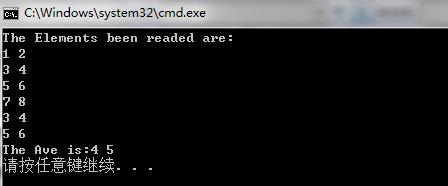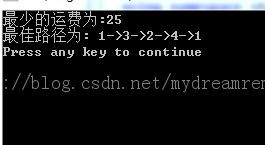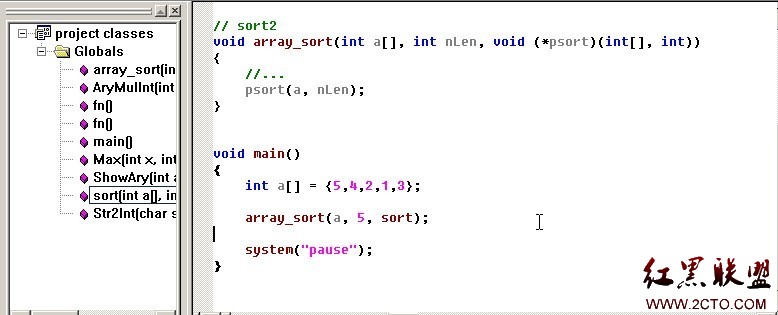c++类的多态与虚函数的使用
类的多态特性是支持面向对象的语言最主要的特性,有过非面向对象语言开发经历的人,通常对这一章节的内容会觉得不习惯,因为很多人错误的认为,支持类的封装的语言就是支持面向对象的,其实不然,Visual BASIC 6.0 是典型的非面向对象的开发语言,但是它的确是支持类,支持类并不能说明就是支持面向对象,能够解决多态问题的语言,才是真正支持面向对象的开发的语言,所以务必提醒有过其它非面向对象语言基础的读者注意!
多态的这个概念稍微有点模糊,如果想在一开始就想用清晰用语言描述它,让读者能够明白,似乎不太现实,所以我们先看如下代码:
//程序作者:管宁
//站点:www.易做图ev-lab.com
//所有稿件均有版权,如要转载,请务必著名出处和作者
//例程1
#include <iostream>
using namespace std;
class Vehicle
{
public:
Vehicle(float speed,int total)
{
Vehicle::speed=speed;
Vehicle::total=total;
}
void ShowMember()
{
cout<<speed<<"|"<<total<<endl;
}
protected:
float speed;
int total;
};
class Car:public Vehicle
{
public:
Car(int aird,float speed,int total):Vehicle(speed,total)
{
Car::aird=aird;
}
void ShowMember()
{
cout<<speed<<"|"<<total<<"|"<<aird<<endl;
}
protected:
int aird;
};
void main()
{
Vehicle a(120,4);
a.ShowMember();
Car b(180,110,4);
b.ShowMember();
cin.get();
}
在c++种是允许派生类重载基类成员函数的,对于类的重载来说,明确的,不同类的对象,调用其类的成员函数的时候,系统是知道如何找到其类的同名成员,上面代码中的a.ShowMember();,即调用的是Vehicle::ShowMember(),b.ShowMember();,即调用的是Car::ShowMemeber();。
但是在实际工作中,很可能会碰到对象所属类不清的情况,下面我们来看一下派生类成员作为函数参数传递的例子,代码如下:
//程序作者:管宁
//站点:www.易做图ev-lab.com
//所有稿件均有版权,如要转载,请务必著名出处和作者
//例程2
#include <iostream>
using namespace std;
class Vehicle
{
public:
Vehicle(float speed,int total)
{
Vehicle::speed=speed;
Vehicle::total=total;
}
void ShowMember()
{
cout<<speed<<"|"<<total<<endl;
}
protected:
float speed;
int total;
};
class Car:public Vehicle
{
public:
Car(int aird,float speed,int total):Vehicle(speed,total)
{
Car::aird=aird;
}
void ShowMember()
{
cout<<speed<<"|"<<total<<"|"<<aird<<endl;
}
protected:
int aird;
};
void test(Vehicle &temp)
{
temp.ShowMember();
}
void main()
{
Vehicle a(120,4);
Car b(180,110,4);
test(a);
test(b);
cin.get();
}
例子中,对象a与b分辨是基类和派生类的对象,而函数test的形参却只是Vehicle类的引用,按照类继承的特点,系统把Car类对象看做是一个Vehicle类对象,因为Car类的覆盖范围包含Vehicle类,所以test函数的定义并没有错误,我们想利用test函数达到的目的是,传递不同类对象的引用,分别调用不同类的,重载了的,ShowMember成员函数,但是程序的运行结果却出乎人们的意料,系统分不清楚传递过来的基类对象还是派生类对象,无论是基类对象还是派生类对象调用的都是基类的ShowMember成员函数。
为了要解决上述不能正确分辨对象类型的问题,c++提供了一种叫做多态性(polymorphism)的技术来解决问题,对于例程序1,这种能够在编译时就能够确定哪个重载的成员函数被调用的情况被称做先期联编(early binding),而在系统能够在运行时,能够根据其类型确定调用哪个重载的成员函数的能力,称为多态性,或叫滞后联编(late binding),下面我们要看的例程3,就是滞后联编,滞后联编正是解决多态问题的方法。
代码如下:
//程序作者:管宁
//站点:www.易做图ev-lab.com
//所有稿件均有版权,如要转载,请务必著名出处和作者
//例程3
#include <iostream>
using namespace std;
class Vehicle
{
public:
Vehicle(float speed,int total)
{
Vehicle::speed = speed;
Vehicle::total = total;
}
virtual void ShowMember()//虚函数
{
cout<<speed<<"|"<<total<<endl;
}
protected:
float speed;
int total;
};
class Car:public Vehicle
{
public:
Car(int aird,float speed,int total):Vehicle(speed,total)
{
Car::aird = aird;
}
virtual void ShowMember()//虚函数,在派生类中,由于继承的关系,这里的virtual也可以不加
{
cout<<speed<<"|"<<total<<"|"<<aird<<endl;
}
public:
int aird;
};
void test(Vehicle &temp)
{
temp.ShowMember();
}
int main()
{
Vehicle a(120,4);
Car b(180,110,4);
test(a);
test(b);
cin.get();
}
多态特性的工作依赖虚函数的定义,在需要解决多态问题的重载成员函数前,加上virtual关键字,那么该成员函数就变成了虚函数,从上例代码运行的结果看,系统成功的分辨出了对象的真实类型,成功的调用了各自的重载成员函数。
多态特性让程序员省去了细节的考虑,提高了开发效率,使代码大大的简化,当然虚函数的定义也是有缺陷的,因为多态特性增加了一些数据存储和执行指令的开销,所以能不用多态最好不用。 <
补充:软件开发 , C++ ,





